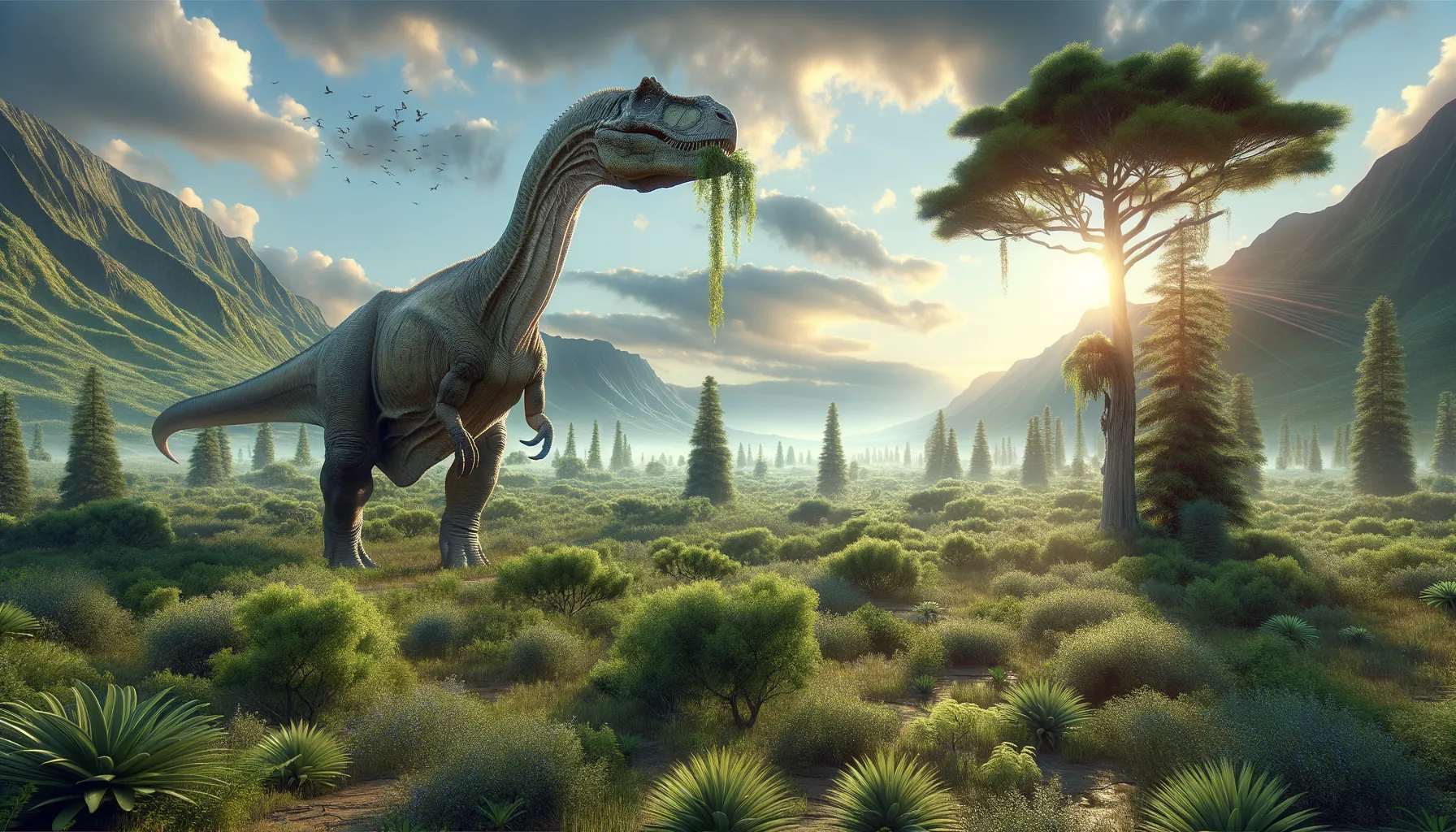
Moabosaurus
A giant from the prehistoric greenery.
Period
Cretaceous
Length
Measured about 30 to 40 feet in length.
Height
Stood around 12 to 15 feet tall.
Weight
Weighed approximately 5 to 6 tons.
Moabosaurus was a large herbivorous dinosaur that roamed North America during the Cretaceous period. As a sauropod, it possessed long necks and tails, allowing it to reach high vegetation. Its fossils, discovered in Utah, have provided crucial insights into the ecosystem conditions millions of years ago. The evidence of its existence has helped scientists understand sauropod diversity and paleoenvironments in the region during its era.
Diet
Moabosaurus was an herbivorous dinosaur that fed primarily on plant material. Its long neck allowed it to access a wide range of vegetation, from ground-level plants to mid-height trees.
Hunting
Being herbivorous, Moabosaurus did not hunt. It foraged for plants, using its long neck to reach distant foliage. It's likely that its diet changed with seasonal availability of plants.
Environmental challenges
Moabosaurus faced various environmental challenges, including changing climates and varying vegetation availability during the Cretaceous period. It had to adapt to shifts in plant populations and minor environmental shifts. Predators would have also posed a challenge; hence, living in groups might have been a strategy for survival.
Speed
Moabosaurus moved slowly due to its large size.
Lifespan
It likely lived for several decades.
First discovery
First discovered in Utah, USA, in the early 2000s.
Fun Facts
- Moabosaurus lived during the Early Cretaceous period, around 125 million years ago.
- It was named after the city of Moab in Utah, where its fossils were discovered.
- Moabosaurus was a sauropod, a type of dinosaur known for having a long neck and tail.
- Its fossil remains were found in a rock formation known as the Cedar Mountain Formation.
- Moabosaurus is believed to have been a plant-eater, munching on leaves and other vegetation.
- The discovery of Moabosaurus fossils has helped scientists understand more about sauropods in North America.
- Moabosaurus was first described and officially named by scientists in 2017.
Growth and Development
Moabosaurus grew from a tiny hatchling to a giant dinosaur over several years. Its growth was likely steady, supported by the abundant plant matter characteristic of its environment. Juveniles would have been vulnerable to predators, and reaching a large size was crucial for survival. Its development stages helped researchers understand sauropod life history patterns.
Habitat
Moabosaurus inhabited semi-arid to lush environments in what is today the western United States. Its habitat included areas with an abundance of trees and plants for food. Seasonal changes in climate would have influenced its movements within its range, seeking out areas with sufficient resources.
Interaction with other species
Moabosaurus likely interacted with a variety of other dinosaur species typical of the Cretaceous period ecosystem. Its size would have warded off many predators, although young or sick individuals might have been vulnerable. It may have coexisted and competed with other large herbivores for limited food resources.
Natural lifespan
Its natural lifespan might have ranged from 50 to 70 years.
Reproduction
Like most dinosaurs, Moabosaurus would have laid eggs, possibly in nests built in secluded areas or within a communal nesting site. After laying, parental care might have been minimal, leaving young to fend for themselves after hatching. However, they would have stayed in groups for collective safety.
Social behaviour
Moabosaurus might have exhibited some level of social behavior, possibly moving in herds to ensure safety from predators. Herd living would have also allowed for community rearing of the young, offering them better protection. Social interactions could have included vocalizations or physical displays to maintain the group dynamics.
Fossil locations
Moabosaurus fossils have been primarily found in the Utah region of the United States. The discovery in the Dalton Wells Quarry added valuable information about sauropod diversity in North America. These fossils help researchers piece together the geographical range and movements of Moabosaurus during the Cretaceous period.
